Tell me about what Current Health does and why you started it.
 Current Health has always been kind of a medical home before the word medical home was even put into the nomenclature. I’ve always desired to have a practice which would make me, as a patient, want to join that practice. So I looked at the practice through the lens of the patient, not through the lens of,”I’m a doctor. This is how I want to practice," but, "I’m a patient, too, and if I was part of a medical practice, I’d want it to work like this". So I kind of engineered the practice to the viewpoint of the patient.
Current Health has always been kind of a medical home before the word medical home was even put into the nomenclature. I’ve always desired to have a practice which would make me, as a patient, want to join that practice. So I looked at the practice through the lens of the patient, not through the lens of,”I’m a doctor. This is how I want to practice," but, "I’m a patient, too, and if I was part of a medical practice, I’d want it to work like this". So I kind of engineered the practice to the viewpoint of the patient.
It’s very focused in competence of care and customer service. Just good old-fashioned service and follow-up with really good doctors and really good staff and the ability to coordinate complex situations simply and easily.
For a monthly membership fee of $50, which is $600 a year … I feel, we feel, our patients feel that’s infinitely fair … we are also fee-for-service on the other side, so we still don’t take insurance even if you come into our office or we make a house call.
That said, insurance is submitted anyway and patients are reimbursed for these visits. If you actually do that math on a $200 visit, where the reimbursement was $140, for example, the patient lost $60 because they didn’t get the whole money back, but they would have had a $40 co-pay anyway. So if they are net $60 negative on a visit to us, their co-pay may have been $40, in which case it’s a $20 difference and for the level of service that one would get. In general, our patients are willing to take that little hit.
At the end of the day, we believe, and our patients believe, that we are protecting their most important asset, which is their health. Our patients look as the practice as an investment in their health, not an expense on their health, because we take the long view and try to get them focused on prevention as well as crisis management.
That must be a different way of thinking for old school docs who weren’t trained to think about being patient-centered. Were you trained differently or do you just think differently?
I think I just think differently. I grew up the son of a surgeon. There is that paternalistic, “I’m the doctor and the doctor knows best” mentality that I saw growing up. I’ve always felt that, as a physician and a healer, and as a physician who appreciates the art of medicine as much as the science of medicine, that you can’t be, “I know what’s best because I went to medical school.” That’s not very humanistic.
I did spend a year through Harvard teaching a high school class in Kenya, in Africa, in the middle of nowhere at the age of 23. I became acutely aware that 90% of the world lives with no electricity and no running water. It’s the industrialized world that does. In order to be in touch with the basic human things: kindness, courtesy, respect, humility, listening … if you are a doctor who went to medical school, what I like to say is, if knew you were going to medical school, the you were pre-med in college. If you know you were going to medical school, you may have been science-oriented in high school. So you’re focused; your head’s down; you’re in the library; you’re studying things.
Then you go to med school and it’s head down. It’s four years there; it’s four years in college; it’s four years in high school. So you’re 12 years in and it’s heads-down. Then you do your training and it’s three to five more years of heads-down. You come out at age late 20s or early 30s and you’ve never breathed a breath of fresh air. You have been in the proverbial medicine box and you don’t know any better. All you know is what has been taught to you from the people above you. So you can see the DNA of paternalism in healthcare just gets passed down from generation to generation.
I attribute my thinking out of the box on this is that I lived in Africa for a year. I got a full break of one year living in the middle of nowhere, really, in the jungle. I got an opportunity to take a step back and decide what kind of doc I wanted to be. I wanted to be able to relate to anybody, irrespective on their socioeconomic condition. I wanted to be able to relate on a more primitive sociologic instinct. That’s requires you to put yourself in the position of the patient when you’re seeing them.
There will be doctors, I would assume, that look at this model, and just do it for the cash. They may or may not have more noble intentions.
That’s true. At the end of the day, it’s still not that much cash compared to what bankers and lawyers make. You’re not killing it. You’re not minting money.
You have to be good. Its like the Four Seasons. If the Four Seasons, all of a sudden, starts having crappy service, people are not going to go there any more. They’re going to go to JW Marriott. They’re going to pick another hotel. A typical doctor who takes insurance can rest on their laurels. The insurance companies and the employers will feed them patients whether they are good or bad. There is no rating system on that.
Now, if you’re going to go outside the insurance world like we have, you have got to be good on a consistent, regular basis. So, if you’re doing it for the money, you’d better be good. You’d better be able to deliver on the promise you made to the patients and you better have good chops, so to speak. Clinical chops. You can’t just be nice. You also have to be a good diagnostician and a good follow-up doctor.
I do think a lot of people go into this with the idea that they’ll make a lot of money, but it means you have to work for it. It doesn’t just show up at your door. It doesn’t just walk into your office. Our brand is built on word-of-mouth reputation. Our patients are referring other patients. We’re getting highlighted here there, and everywhere. Its because I think we do a really good job.
I want to give you a softball question here, because I’ve seen your answer elsewhere, but I think it bears repeating. What’s wrong with the average patient-physician-insurance company relationship that’s common today?
All the incentives are all wrong. The insurance companies have an incentive to not pay the doc because its more money to them.
The fundamental problem is the patient walks into a doctor’s office, kind of with someone else’s credit card, and says, “I want this, this, and this”. They’re not paying for it. They are not accountable for it. “I want an MRI, doctor. I want a fancy blood test. I want all these things, but I don’t want to pay for it. I want somebody else to pay for it.”
So the fundamental problem right now is that there’s no price transparency, so nobody knows what anything costs, really, number one. Number two is there’s no accountability on the patient’s part to bear some of the cost of what they either consume or use. I fundamentally believe that insurance, as a construct and a principal, is a financial instrument. It’s not a healthcare instrument. Health insurance is no different than car insurance or life insurance. You put money in, and if something really bad happens to your car, your house, or your life, there’s money on the other side of that.
Health insurance was never intended for, if you look at the old model, a sprained ankle or an eye exam or a physical exam or for minor surgery. You paid that by yourself, and if you hit your $5,000 or $10,000 deductible, you were covered. Therefore, car and home and health insurance should be and is personal bankruptcy protection. That’s what’s it’s supposed to be. It’s to protect you in the case of unforeseen catastrophic loss.
What the healthcare insurance companies are starting to do is say, “Hey, we’ll guarantee you a range of services in addition to financial risk mitigation”. People say, “Wow, I can pay a little bit extra and they’re going to give me this network of doctors”. The network of doctors that they have has no love for that insurance company. They are not working for the insurance company. They are working for themselves and for their small business, wherever that is. The insurance company continues to crank their reimbursement fee down and continues to throw more administrative stuff at them and it becomes a “How many patients can I see a day?” throughput problem for the doctor’s office to meet their payroll. It’s the cost of doing business.
And so insurance companies have been great at, ostensibly, taking a cottage industry where every different market had different price structures and said, “Great, everybody’s going to accept this reimbursement for this set of codes,” even though they never told you what you were going to get. So the prices came down, but then what happened is the transparency goes away and then the doctors are getting no appreciation from the patients because the patients feel they’re only getting seven minutes, and the insurance companies, because they’re not paying them what they think they deserve.
So you get all these doctors that are feeling unloved and frustrated. I contend that a frustrated doctor is a frustrated patient because doctors are human. There’s no way that doesn’t translate through. I know that because when I first starting doing medicine, I joined a HMO PPO practice. I was just getting really frustrated that I would spend an hour with somebody and solve their problem. The insurance company would then send me a letter a month letter saying, “That’s not a covered service. You’re not getting paid for that.” The patient already got the services.
I would get frustrated because I never knew what I was doing that I would get paid for. The patient didn’t care because they weren’t paying somebody for it. They didn’t know that I wasn’t getting paid and I wasn’t going to sit there and tell them that. I started talking about the business of medicine eight years ago and people were like, “Medicine is not a business. You’re a doctor. You care for people.” I was like, “Yeah, but I have a small office. I have a small business. I’ve people to pay and I have income to get and I’ve got to make them square".
I kind of got pooh-poohed about talking about the business of medicine for a long time. Nobody wanted to talk about it because there was this institutional inertia about doctors are caring people that don’t talk about business. Guess what? That’s now upside down and everybody’s talking about business. So, I joke and say, "It’s not easy being a trendsetter." But I had to endure being the whipping boy for, “That guy — look at him. He’s doing crazy stuff over there in medicine”. Now what I’m doing is the national rage. Everyone’s doing it.
As far as the insurance companies go, the biggest and the worst is probably the federal government. It doesn’t appear to be getting much better. The answer to every solution is just getting more people federal coverage. I don’t see much incentive to make it better when the answer is just get more people bad insurance from the federal government.
Great point. I really believe that there needs to be some system, so that somebody falls out of their job .. right now, we have an employer-based system with a federal-based age core system. I think there’s needs to be some mechanism whereby, if somebody loses their job, they should have some basic level of coverage. Again, it should be called insurance, where they are responsible for, even in a federal system like Medicare, which I don’t necessarily fully agree with, but you’re responsible for the first $2,000 and the government picks up the tab after that. It’s going to make you a little bit more responsible, because at least you’re responsible for something. With Medicare, at least you’ve paid into it all your life, so there’s a different structure there.
What you’re talking about is a top-down approach. We, the federal government, will expand what we are currently doing to more people. We’ll make the DMV bigger for healthcare. DMV’s okay. It actually works, but you spend a whole day going to the DMV.
What I believe will happen is, much like in the UK but on a bigger scale, is you’ll have some federal program, and if you want to opt into it, you can. Then there will be another system of private medicine where you, the patient will become a consumer and me, the doctor has to become a conscientious provider that will try to solve your problems and be your advocate in a timely, responsible way. Not a, “I’ve got to see 30 of you today to make my nut.”
What you’ll start to see it a lot of these boutique practices going off the grid, is what I say. Then what you’ll do is buy insurance like I have. I have a $10,000 deductible on my healthcare savings account and I have a family, so I put in $6,000, so I am responsible for the first $6,000, tax-free. The next $4,000, I’m responsible for the tax. And then, everything after $10,000, I’m covered.
In healthcare, as you probably know, things are either under $1,000 or they’re over $10,000. If you need surgery, that’s over $10,000. If you need a mole removed, that’s under $1,000. There’s not a lot of things that fall between $1,000 and $9,000. So, what you’re going to start to see, I think .. I just read an article this morning that they think the hockey stick of HSA adoption is 2013, especially with all these layoffs going on this year and next year. People want low monthly premiums because right now, they are paying $600 a month and getting crap. They are getting coverage. They are not getting delivery, but they’re being sold that they are getting coverage and delivery. It’s a slow process, but you’re going to see the top-down federal government approach and you’re going to see the bottoms-up approach from individual people like doctors, like me and my group, that will eventually say, “Hey, I can make the same amount of money as I was before and I have more quality time with my patients."
If you are an internist today, you’re making $150,000 a year, which is probably the national average-ish. Maybe a little more, maybe a little less. You’re seeing 35 patients a day and you’re taking this many call nights per month, and you have this much charts and you have this much admin and you have this much staff. If I said to you, you can make the same amount of money, but you’ll have less patient load and you’ll have better outcomes because your patients will be buying into you because you’re spending more time with them; you’ll have less staff to do billing because you’re not doing billing. Would you trade the same amount of money with much less headache?
You know what the answer is? All day long. So you’re not necessarily seeing a doctor make more money. He has a better life for himself and he has more time with his patients. I think that’s the key. You can’t beat doctors into the ground and say, “Be a good doctor.” Doctors need to feel appreciated, and generally you feel appreciated when your patient sends you a bottle of wine and says, “Hey, thanks for taking me through that crisis, I really appreciated it."
Right now, doctors punt to hospital doctors and the crisis is like a hockey puck. Everyone’s punting the hockey puck to the next guy. No one’s quarterbacking any more. It’s like rugby. It’s like a hot potato game. In our practice, every hot potato is owned by the doctor and the doctor makes sure that hot potato gets cooled down in the right environment with the right people around them. That loops gets closed on why that potato got hot in the first place.
When you mention the high deductible plans, that implies a certain amount of responsibility on patients and hospitals get stiffed constantly from patients that are all for paying until they’re out and well again. Suddenly that’s the last thing on their list of things to pay and they never do. In your case, you require credit card to pay up front. Can you trust patients to be willing to pay when they get good service?
Here’s the thing. This goes back to a fundamental human trait. It boils down to the relationship. If I’m your doctor and you know I’m doing well by you and you trust me because I look you in the eye and what I say will happen happens. You know that I’m your healthcare guardian, so to speak. You don’t want to stiff me. I’m your guy or your girl. I’m your doctor. You can’t just find someone that you click with that easily in this world, let alone with your doctor.
So what we find is, if you spend time to develop those relationships with your patients, you don’t get that. They don’t want to stiff you because they know the next time they need you in a pinch, you may not answer the phone. “Go to the ER. Go see someone else. You haven’t paid your bill”. I won’t say it never happens. It happens rarely, though. Extremely rarely. In fact, one of our mechanisms to mitigate that is we have your credit card on file, so before you leave, it’s being paid. There’s no billing involved, That’s why you don’t have to hire all these staff to collect the accounts receivable. There are smart ways to do it.
Obviously, if you’re seeing somebody that’s really sick at home, because we do house calls 24 hours a day, we try to bring the solution to you instead of you trying to beat your head against a wall trying to find it. I had phone call … she wasn’t even a patient. She was a friend of a patient who developed numbness in her fingers. Her eyes started seeing jagged lines. So she went to ER and spent eight hours. A bunch of people were there trying to get pills and food. They’re were faking it to the clinicians just to get some food at some ER in Oakland.
The doctor did a CT scan and said, “I think you have multiple sclerosis. Go see this neurologist.” So she called the neurologist and he’s not available for three months. She’s a mother of three. She now is freaking out that she may have MS. So then I get a phone call, “Can you help my friend?” I called her up, and the next morning, she was in my office for a blood test to just rule out autoimmune things. I e-mail the head of the MS clinic at UCSF and say, “I’ve got a priority here. Can you please see this woman?” He says, “No problem, I’ll see her on Tuesday.” She’s being seen as we speak right now. This all happened on Friday of last week. That’s just somebody minding their Ps and Qs, me that is, and making sure that this crisis is adequately managed by me. I’m not going to hand it off to anybody else. Then you’re playing the telephone game and the ball gets dropped.
If everybody takes their cash patients and calls in favors to get them seen, then doesn’t that just make that ED wait longer than it was before?
Not really. If she was my regular patient, I would have said “Don’t go to the ER.” I would have said, “Come and see me. Let me do some blood tests and get an MRI myself." She didn’t need to go the ER.
Right now, the ER is the clinic of last resort for everybody. What our clinic says is, “No, let us see you first. Let us make a house call so you don’t need to go to the ER.”
If you think about it, if you zoom out for one second, if I make a house call on somebody and I charge them $600 and I solve the problem, I can do an IV and a shot of this. So that’s one less person in the ER. So that’s good. They’re unclogging the system. If they had gone to the ER, somebody’s getting billed $3,000 because the cost of the system is $3,000. So the ER wins because it’s one less patient. The system wins because it’s a lot cheaper. The patient wins because they got treated right then and there, they paid $600, submitted for insurance, and they get $300 or $400 back, so it cost them $200 and they saved eight hours.
So I contend that the way we do it actually saves the entire system money and everybody wins. As long as I can prioritize, I’m not going to send every patient with a headache to the MS clinic, but she had signs and symptoms that sounded like it could be MS, there’s no reason why she should wait three or four months to get that diagnosis. This isn’t Canada. I use my juice, so to speak, my horsepower, when it’s appropriate, and I don’t misuse it. If I did, then nobody would take my calls. There are internal checks and balances in the system. If I’m an ass, nobody is going to take my call.
When I interviewed Jay Parkinson, he’s focusing on house calls for young patients in a tiny geographic area who have no chronic illness. How does your model differ from what he’s doing?
We take everybody, anybody. We don’t care. I think Jay Parkinson is pediatrician, so it doesn’t surprise me that he’s taking care of younger people, but I’m an internist. I have a partner who’s internist with a geriatric background. We have an ER doctor. We have a naturopathic doctor. We have a pediatrician and a family practice doctor.
I just got an e-mail a few minutes ago. There’s a 97-year-old lady who needs a doctor. No problem. I’m not going to take Medicare, but no problem, I’ll take care of her. If I was taking care of young healthy people all the time, that’s not interesting. That’s like MinuteClinic stuff. The intellectual exercise that is medicine is the art of medicine. Is getting a complex situation and trying to make it simple and make it manageable and help somebody through it. That’s where I get the most joy out of medicine.
I think Jay Parkinson is a stand-up, great guy. Don’t get me wrong. I don’t want to come off a disparaging Jay because we’re pals. We just have different viewpoints. I’ve been doing this for 14 years, in the trenches, learning, doing. I’m very well rooted in the realities of it all. It’s hard work to build small business and grow it in scale like we’re doing. There’s nothing easy about it. Every single day, you’ve got to be on and you’ve got to be available and you’ve got to be smart.
You mentioned MinuteClinic. Its interesting that some folks say, “We’re never going to get enough primary care practitioners anyway, so we might as well admit defeat and say that nurse practitioners and PAs can take care of almost everything that a PCP can. Let’s save doctors for something more important that takes more high-level thinking.” What are your thoughts on the hierarchy of medicine?
I think there is a place for MinuteClinic. I’m a associate professor of nurse practitioners at UCSF, so I train them. I do think there’s an important role for them. At a regular doctor’s office, if you come in for a cold. I’ll look at you for 7-10 minutes. I’m done in 10-15 minutes. Versus if you come in with high blood pressure and high cholesterol, I may get reimbursed the same amount from the insurance company … for every hundred patients a doctor cares for, the physician must interact with as many as 99 other physicians and 53 different practices.
My point is that the complicated patient requires me to read their chart before they get here. I’ve got to get up to speed on them. I see them, and then when they leave, there’s going to be a few more phone calls, e-mails, voice messages, and faxes going out about coordinating their care. So, the complex patient doesn’t require 15 minutes. It requires five pre-minutes, 15 minutes during, maybe 30 minutes. Whereas the code is 15 minutes all in. If you’re getting reimbursed roughly the same, then essentially, the MinuteClinics are cherry-picking the bread and butter of the internal medicine practice.
That said, if we start turning into a Canadian Lite, you’ve got to wait three months to see a doctor for a sore throat. Then, if the internist can’t figure out how to make their offices run better, then too bad. Then guess what? Let the MinuteClinic succeed. Let the nurse practitioners fill a limited role, but my philosophy has always been a really good doctor knows when they don’t know and they call in a specialist. An even better doctor can handle something that he knows and doesn’t punt to a specialist because its more convenient.
Does that make sense? There’s a ton of extra visits where a doctor says, “Go see a gastroenterologist or go see a specialist.” Not because they don’t know and it’s out of their league, but it’s off their plate now. “I could deal with it, but it’s going to take me an hour, but if you go see them, they’ll do the work up and send me a report.” Then it’s going to take you, the patient, six hours of back and forth time and scheduling and who knows.
We need to get primary care doctors back in the business of managing the business of managing most of the problems and not just punting to the specialist. That’s another reason costs are going through the roof. The hierarchy is internists or family practice doctors should be dealing with the whole range and they should have nurse practitioner or PAs working with them in a collaborative environment where the cost structure is such that you don’t have to have a MinuteClinic over there that’s a standalone PA in a box.
Imagine the system. You go see the MinuteClinic guy and they say you need to see a doctor. So that’s a two-step, vs. you go to the clinic where there’s a nurse practitioner and the nurse practitioner says, “This looks a little bit funky. Let me get the doctor real quick.” He comes in and sees you. That’s a one-step and you’re done and you’ve paid one fee, not two. So I think the organizational system, the way this is all set up, is a little bit chaotic. I think a good, coordinated approach like what we’re doing … and we don’t have nurse practitioners or PAs right now, but I don’t know that we won’t have them soon.
Do you see that every physician will just start off on their own and decide this model makes sense and try to do it, or will there be somebody that’s advising them?
There’s an organization now called the SIMPD. SIMPD.org. I’m on the board of that. There’s 200 doctors doing what I’m doing around the country. If you want to be one of us, we can tell you and show you how to do it. It still doesn’t speak to the fidelity of the process model, which is what Current Health is trying to develop.
Our goal is to open up different offices in different cities and say, “If you’re a traditional doctor and you want to make the same amount of money but work less and have more fun, then join us and we have the whole back end set up. You have your medical practice front end set up and we just plug the two together and then you don’t have any admin responsibilities anymore. You have doctor responsibilities. You can make the same, if not more." Our goal is to try and create a system where it’s easy to plug doctors into and they get all the benefits of the scalable back end, which isn’t just technology. It’s HR, it’s financial, it’s everything.
Is that kind of like doctor’s union?
If you say union, people go crazy, so I wouldn’t go say union.
A guild?
Yeah. It’s an affiliation of like-minded doctors trying to create a branded healthcare practice that is the same no matter where you go, whether its San Francisco or Los Angeles. You walk in the office, it feels just like the other one. Everyone’s treating you just like the other one. They’re all on the same electronic medical record. You’re credit card is already on file. You can e-mail your doctor or your nurse and there’s systems in place where it’s all the same.
Right now, if you go see me and then you go to the doctor in Flagstaff Arizona, he may have a whole completely different way of doing it. So you run into … there’s no standards. I’m trying to develop a set of standards that I think sets the bar really high for doctors and for patients.
You mentioned electronic medical records. Tell me about the technology that you use and how that helps you do what you do.
Right now, it’s nothing fancy. An electronic medical record is a hard drive somewhere else that you can access wherever you want. We have an Internet-based EMR, so from home, I can log on to my electronic medical record. If the patient e-mails or calls me about something, I can pull that up any time. It’s soon to be on our iPhone.
All I really care about is past medical history, problem list, medications and allergies. From those three little elements, I can figure pretty much anything out if someone’s calling me and I don’t know them very well or I haven’t seen them in a while.
I’m devising a system that’s kind of in stealth mode right now, which is an entire … a lot of the electronic medical record systems from athena to eMDs to Allscripts, they have been designed top-up. They hire a couple of doctor consultants and ask, “How would you like it to work?” You get a system designed by engineers for what they think the doctors want.
I’m in the process of designing a system which I think maps to the processes of this practice in a way that once it goes … I’m getting the beta version on Thursday. They are presenting it to me. Then the patient, the staff, or the doctor can log in and everybody sees all the balls that are in the air that need to be caught before they hit the ground. I always say, in medicine, all day long, we open up loops and we have to make sure that they’re closed. It’s our responsibility.
In the existing healthcare system, doctors open up loops and it’s on the patient to close the loop. “Go see that specialist. Oh, you went to see him and the labs I drew two weeks ago they weren’t there? Oh, so now you need to go see him again." It’s my responsibility that when I say, “Go to that specialist,” my office gets those labs or those reports to that guy, confirms that they’ve been received. There’s lots of things that need to happen to make the system work well and no one is doing it. No one cares. It’s too much work.
But you’ve got a pretty big luxury that you don’t have to design a system intended to get you paid or to justify what you bill. If you look at the standard EMR, much less practice management, almost all of it is there just for billing and legal purposes, not to benefit the patient.
Agreed, which is why I’m a big fan to get out of that system. You don’t need it. Specialists need it because they do expensive things, but certainly I don’t believe that primary care doctors need to be doing that.
So is this product that you’re building going to be to connected to the network of folks that you envision practicing under your model?
Correct. I may even license it to other folks if they wanted to use it for their practices. Great, go for it, I’d license it to you. I may do that.
Explain how yours differs conceptually and what the benefits are to the patient and doctors.
I think that the way mine differs conceptually … first of all, its completely Web-based and a lot of these systems aren’t. It’s completely Web-based, but it places an equal emphasis on process than it does on data storage. Most EMRs are a repository for data, with very little forward thought into mapping patient flow and accountability from one loop getting opened to another one. It’s much more focused on doctor, staff, and patient accountability for what they need to get done for any particular problem. Its not like, “This is a hypertension algorithm. Do this, do this, do this.”
Everybody’s different. That’s the thing. You can create a system, but there’s always going to be exceptions. The way I look at it is create a higher level approach to all problems. All problems need to go through this pathway. Then you can customize those problems with a couple of tweaks, but it puts the onus that my staff can log on … there’s five things that they’re working on. I just handed the baton to them and now they’ve got it to the patient and the specialist before we can say this is all done and closed.
It’s a process package and a electronic medical records storage package. I think that’s the difference. Very few EMRs build in a lot of process. It’s just scan this in, file it there, you can retrieve it like that. You can graph this, big deal, they all do that now. I think EMR 2.0 is going to be a process EMR.
The government stimulus package throws a lot of money at EMR 1.0 and says what we’ve got is good enough, so we’ll just get a lot of them out there and figure out a way to get them to talk to each other.
EMR 1.0 is really expensive. I’m going to plow a considerable amount of money into it just to make it work, but then I can license this thing for $200 a doctor a month. My cost is roughly $150. The most recent EMR quote that I just got was $250 a month per person, so that’s $4,000 a year.
You can use Google for free. I can do online banking. They don’t charge me to do online banking. Why hasn’t the government created an EMR that’s just free? They’re pouring all this money into it. They should make an open source freebie. That to me is the wet dream. But sadly, there’s all these different people with their proprietary systems that want to make lots of money. They’ve got a lot of clients, and for a client to leave that system would cost more than staying in it.
It will be interesting to see what happens over the next five years. I think with the economy doing what it’s doing in its quasi-free fall, I think the lot of the little practices like mine … you can feel it, right? People are being far more careful of where they spend their money, which is fine, but at the end of the day, there are a lot more people that aren’t employed and those people have no health insurance and nowhere to go.
I tell people, “I don’t know you budget for food and clothes and all these other things, but you should put a line item for healthcare in your budget. One of the line items should be broken down into money I’ll spend on insurance and money I’ll spend on doctor visits". And that’s an aggregate number. It shouldn’t be, “I’m going to spend this much on healthcare and it only goes to insurance.” You’re giving money to the people that are just hogging it. That doesn’t make a system healthy. You’re feeding the pig and you’re starving the pig handlers. It’s upside down.
Are you concerned about building in capabilities for analytics, quality measurements, or any kind of compliance?
Absolutely. There have been all these studies that have come out recently that EMRs don’t make healthcare any better. They don’t make it cheaper and they don’t make it better. The problem with analytics — statistics, statistics, and damned lies — is one doctor’s got a bunch of young healthy patients, his statistics look great. If some other doctor takes all the sick other patients and you don’t have some multiplier or qualifier in there, and I don’t know how you could do that, I think there’s going to be a lot of misinformation with that.
The other thing is there’s no evidence — and you can quote me on this — for evidence-based medicine. If the bell curve is 80% of the people and you’re going to say 10% are outliers on that side and 10% are outliers on that side. We’re going to make the evidence for the 80% in the middle. Every time somebody walks into my office, they represent one person. They’re not 100 people. They are one.
I don’t know where they live on that curve. If I just lump them into that 80, there’s a 20% chance I’m wrong. Why would I do that? If I gave you an antibiotic and said there’s an 80% chance of working, would you take it to get rid of that sore throat? Of course not. You want 95% and the way you get to 95% is you sit and you talk to the patient and you understand their uniqueness in the context of the cohort. Then you make a treatment plan that is relevant and unique to them.
Are you saying that evidence-based medicine is an instrument of pseudo-rationing?
Yes, that’s right. You’ve said it better than me.
A philosophical question, but are we on the right track throwing all this money into electronic medical records and quality measures and pay-for-performance, or are we really barking up the wrong tree?
I think we’re barking up the wrong tree. It’s the carrot-and-stick tree. It’s like, do good and you will be rewarded, or do bad and you won’t.
You know what? If you give a doctor time and give them the ability to do what they’re good at doing, of course they’re going to have good outcomes. Nobody wants to have bad outcomes. You don’t go into medicine to not care for people. You go into medicine to care for people.
This goes back to, “You doctors are going into medicine for the money.” If I wanted to make money, I wouldn’t spend 15 years of my life making nothing and struggling to make $150-$200,000 by the time I’m 35. Are you kidding me, and $300,000 in debt?That just doesn’t fly.
That’s on the one hand. On the other hand, if the government says we’re going to nationalize healthcare, I’d say, “Hey, bugger off. Pay my med school bills. Great, but if you’re going to tell me what I can make as a salary … if I can’t do free market or do enterprise or if I work more I make more, then pay my med school bills and pay me the opportunity cost for all this time that I’ve spent to be your employee,” which is what they do in England. Medical school doesn’t cost any money, but you come out and you get paid by the NHS and it’s salary. You don’t pay to go to school. They pay you to go to school.
We have this system where you can’t just push one button and you fix it, but I fundamentally believe, if you get a core of new doctors … in my business, if I do well, I get more patients. It’s called a positive feedback loop by doing well. There’s enough online rating systems out there that rate me. Patients will say this guy’s great and then another one comes.
I’m just one little person. My whole practice is. But if we have good outcomes, we get more business and we grow. This is the free market way of thinking about it … the good guys do well because you can’t have a bunch of bad outcomes and have this thriving practice.
In the insurance model, you can have bad outcomes all day long. If you’re a Blue Cross provider, people look up in the book and they see your name and they go to see you. There’s no forethought into that. Why would you not? Do you really care if they’re good or bad? Maybe you don’t believe what other people say. But if you’re popping down your own dollars to see this guy, they better be good. He better solve my problem. He better be helpful. If he’s not, I’m not going to see him again.
I’ve seen some pretty horrible doctors that had really good bedside manner and wore nice suits. The patients probably would have rated them very highly, and yet clinically, they were really marginal at best. Can patients be trusted to judge or use the judgement of others in making a medical decision, like they would to go see a movie or decide which restaurant to eat at?
A good question. Think about it. You go to see a doctor for a yearly physical. So there’s nothing to judge there. The doctor will see you. So if he misses the fact that you had a melanoma, that’s a black mark on that doctor. How did he miss that? I went and saw a dermatologist. They said, “You should have caught that a year ago,” but I had a physical six months ago.
So there’s a patient who will say, “Goddammit, how did that get missed?” Maybe they won’t, but if we don’t trust somebody to at least reflect … we get back to this paternalistic mode. If patients don’t know anything, then the doctor knows everything.
The other thing is, if you have problem and I say, "Go to the ER," you have horrible experience. Then you see me and I say, “Let me get you a room directly in the hospital and let me get the surgeon to see you there”, and then everything works out with you appendectomy, you’re going to go, “Wow, that was great.” It’s not just the bedside manner and the nice suit. It’s the experience of being under that doctor’s care in an illness and being under that doctor’s care in a prevention situation.
The bar in healthcare is so low right now. It is set so low, the insurance companies have beat the system down so low, that you only have to be good to look great. If you’re great, you look fantastic. You are, to the patient.
I’m not tooting my own horn, but I just pay attention. When I go home, I don’t turn my pager off and let someone else do all the work for me. If I have a patient that is in mid-loop and got a problem going on, I want to make myself available until that problem is resolved.
I don’t have 3,000 patients bothering me all the time. I only have a couple. You keep your practice down to less than 1,000 patients, then it’s instantly manageable. Once you get above 2,000, you’re punting to specialists and frustrated.
I’m fascinated by your father and your family. It seems like it must have been interesting being raised by a renaissance man and surrounded by that. I’m just curious, what is that like and how did that make you think differently than the average physician?
My father is truly a renaissance man. He has been a huge, huge inspiration to me, just for a guy that thinks out of the box. He was doing general surgery and then laparoscopic surgery came out; he was the first guy to do it. Everybody laughed at him and then he became the preeminent laparosocopic surgeon in the country. Everyone is just really motivated to succeed.
So, in a way, its been huge inspiration. He builds bridges from different disciplines that had been so eye-opening to me. I think his brain is wired like Leonard da Vinci’s, in a way I’ll never understand. But I think being a progeny of that and seeing it in action has been just inspiring. That’s it. A pure inspiration.
He practiced under a different model than you did, so what does he think of how you’re practicing medicine?
He loves it. He’s saying, “My son’s making more money than I did as a super successful surgeon.”
Some background is when I was doing the PPO HMO thing, I said to my dad, “I don’t like this. I’m going to get a MBA at Harvard or Stanford”. He’s like, “Over my dead body you are. You’re a doctor and you’re going to be a doctor.” I said, “Well, I’ve gotta do something different”. He said, “That’s fine”.
So I started doing the fee-for-service thing and all my peers are laughing at me. “What are you doing? You’re defacing and disgracing medicine. You’re charging money for things? What’s wrong with you?” I was like, “You charge money, but you bill the insurance company and only get a percentage. I charge the people and get 100%. Why are you laughing at me? Why am I the outcast here? What did I do wrong?” It’s clearly the doctors being jealous story.
He’s incredibly proud that I stuck with being ridiculed by my peers, but loved by my patients. Now, I’m being loved by my patients and my colleagues are going, “Wow, what is he doing that I need to do?” If you buckled to the peer pressure, I would have gotten out of this a long time ago. As he says, his buttons are bursting. So I guess I’m doing all right.
 The HIM program was established in 1965 and has graduated many of the top contributors to this profession. Coursework in health informatics was originally built in the early 1990s, with the Master of Science in Health Informatics degree formally established at UIC in 1999. We are by far the largest and one of the oldest health informatics graduate education programs in our industry. Our multidisciplinary program is housed in the Department of Biomedical and Health Information Sciences in the College of Applied Health Sciences, which is one of the six primary health discipline colleges located on our campus just west of downtown Chicago.
The HIM program was established in 1965 and has graduated many of the top contributors to this profession. Coursework in health informatics was originally built in the early 1990s, with the Master of Science in Health Informatics degree formally established at UIC in 1999. We are by far the largest and one of the oldest health informatics graduate education programs in our industry. Our multidisciplinary program is housed in the Department of Biomedical and Health Information Sciences in the College of Applied Health Sciences, which is one of the six primary health discipline colleges located on our campus just west of downtown Chicago. 




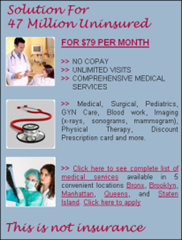



 It must be something wrong with us…
It must be something wrong with us…

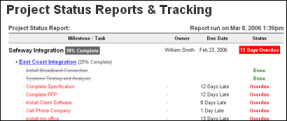
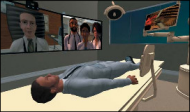




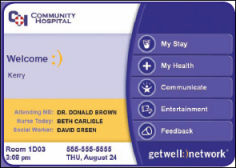






















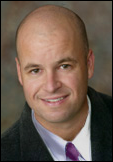




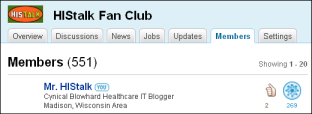







































































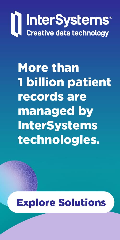
















The primary point of using the Cloud is using operating expenses vs limited capital ones and avoiding having to update…